So, you’re thinking about visiting Gangneung? You’re in for a real treat! Nestled on the east coast of South Korea, Gangneung is where the deep blue of the sea meets cultural richness and culinary delights. It’s not just a city. It’s a gateway to some of the most beautiful beaches, historic temples, and vibrant coffee culture South Korea has to offer. Whether you’re a fan of serene sunrises, looking to dive into the Olympic legacy, or eager to explore traditional Korean culture, Gangneung has something special for you. Let’s jump into what makes Gangneung a must-visit destination.
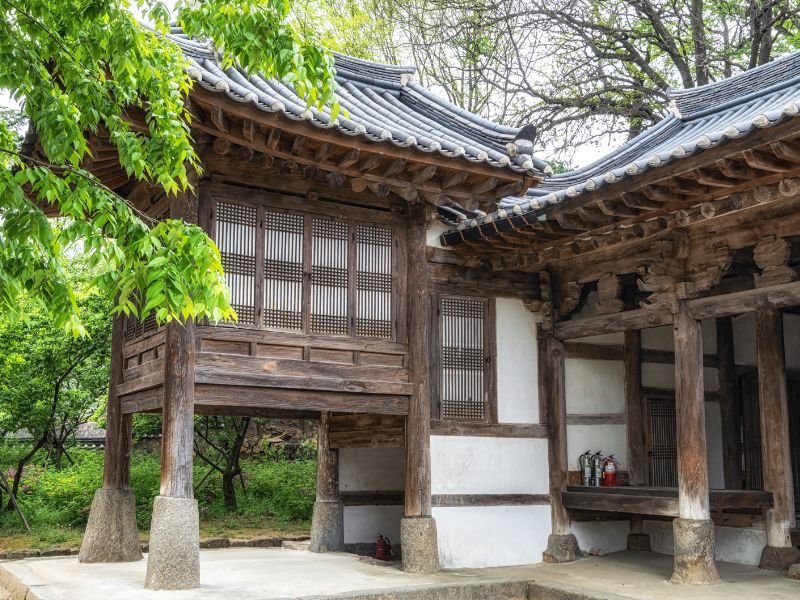
Beach Bliss and Coastal Wonders
Sandy Toes and Salty Kisses: Gangneung’s beaches are the city’s crowning jewels. Anmok Beach, with its famous Coffee Street, offers the perfect blend of relaxation and caffeine-fueled exploration. Gyeongpo Beach is another hotspot, known for its soft sands, clear waters, and the scenic Gyeongpo Lake nearby.
A Deep Dive into Tradition
Cultural Riches: Step back in time at the Ojukheon House, one of the oldest wooden residential buildings in Korea, or get mesmerized by the tranquil beauty of Gyeongpodae Pavilion. Gangneung’s traditional markets and historic sites offer a glimpse into the city’s rich heritage and the enduring legacy of Korean culture.
Culinary Journeys
Flavors of the Sea and More: Gangneung’s culinary scene is a reflection of its coastal location. Here, you can savor the freshest seafood, dive into hearty Korean dishes, and discover why the city’s coffee culture is hailed as one of the best in the country.
Olympic Spirit Alive and Well
Legacy of the Games: Having hosted events during the 2018 Pyeongchang Winter Olympics, Gangneung isn’t shy about its Olympic pride. The Gangneung Olympic Park remains a site of inspiration and achievement, where visitors can skate in the footsteps of champions or simply soak in the historic atmosphere.
Gangneung Awaits
It’s clear Gangneung is more than just a summer getaway. It’s a year-round destination. From the serene to the exhilarating, the traditional to the contemporary, Gangneung invites you to experience the beauty and depth of South Korea’s east coast. So, pack your bags (and maybe an appetite for coffee), and get ready to discover all the surprises Gangneung has in store.
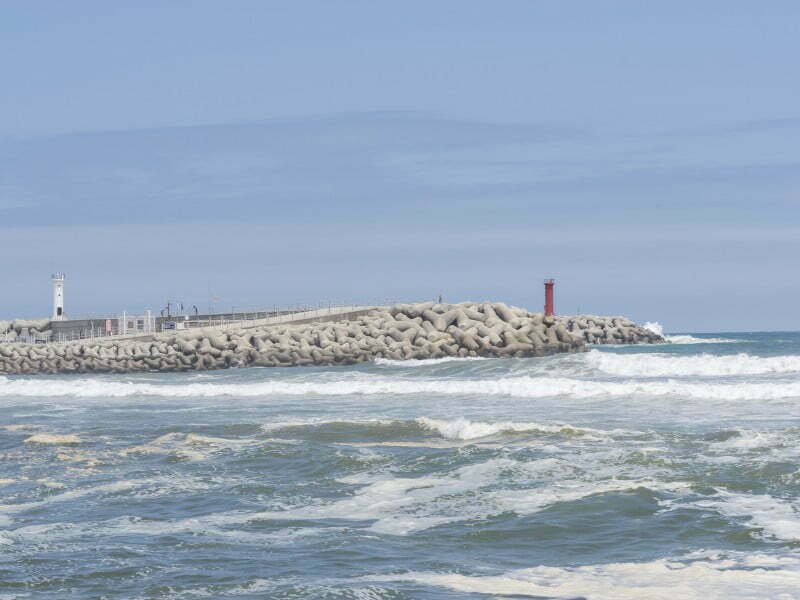
Gangneung City Guide: A Brief History Of Gangneung, South Korea
Diving into Gangneung’s history is like unearthing a treasure chest full of stories spanning centuries. This coastal city, with its deep-rooted traditions and dynamic history, has played a pivotal role in shaping Korea’s cultural and historical landscape. Whether it’s the ancient relics or the echoes of the Winter Olympics, every corner of Gangneung has a story to tell. Let’s embark on a journey through time and uncover the layers that make Gangneung a city of historical intrigue and resilience.
Ancient Beginnings
Roots Deep in History: Gangneung’s story begins in the mists of prehistory, with settlements dating back to the Neolithic period. The city’s strategic location on the East Sea made it a hub for fishing and trade, laying the foundations for a thriving community. Artifacts and ancient sites around Gangneung bear witness to its long-standing significance in the Korean peninsula.
The Goryeo and Joseon Eras
Dynasties and Development: As Korea entered the periods of the Goryeo and Joseon dynasties, Gangneung continued to flourish. The city became renowned for its scholars and the arts, contributing significantly to Korea’s Confucian traditions. The Ojukheon House, birthplace of the celebrated scholar Yi I, stands as a testament to Gangneung’s intellectual heritage.
A Haven for Culture and the Arts
Preserving Traditions: Gangneung’s cultural landscape is dotted with festivals and traditions that date back centuries. The Gangneung Danoje Festival, recognized by UNESCO as an Intangible Cultural Heritage, highlights the city’s commitment to preserving its cultural identity. This annual event, with its rituals, performances, and folk games, draws visitors from all over to participate in a living tradition.
Modern Transformation
Olympic Legacy: Fast forward to 2018, and Gangneung captured the world’s attention by hosting the Winter Olympics’ ice events. The Olympic Park and facilities, now iconic landmarks, symbolize the city’s modern achievements and international spirit. Gangneung demonstrated its capacity to blend tradition with modernity, showcasing its unique charm to a global audience.
From its ancient roots to its Olympic pride, Gangneung stands as a city where the past and present harmoniously coexist.
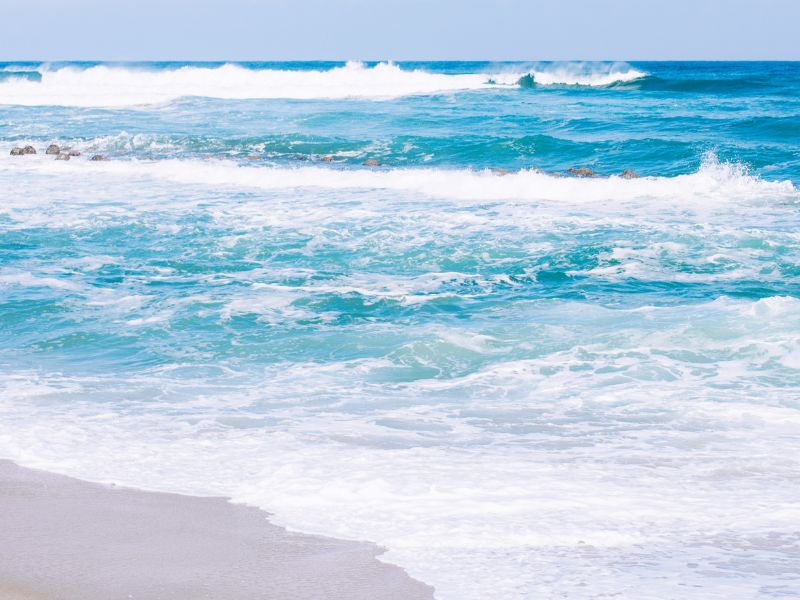
Gangneung Top Attractions and Best Places to Visit in South Korea
Situated on the East Sea in Gangwon Province, Gangneung is best-loved for its immaculate beaches.
However, with buildings dating back to the Joseon Dynasty, outdoor art galleries, and a museum that will appeal to the scientifically-minded, it is well worth a visit by cultural travellers.
While Gangneung is best known for its beaches, it has more than its share of cultural attractions. Begin your time in the area with a visit to Ojukheon. In this historic home, Confucian philosopher Yi Yulgok was born – if you pull out a 5,000 won bill, you’ll find his portrait on the back.
His mother Shin Saimdang adorns the back of the 50,000 won bill – these two facts reveal how important these figures in Korean society. The home they grew in is also one of the oldest buildings from the Joseon Dynasty – around since the 16th century, its garden is one of its best aspects.
Boasting unique groves of black bamboo (which is the direct English translation of Ojukheon, lotus ponds, and cultivated shrubs, you’ll linger here longer than you planned.
Continue exploring the history of Gangneung by checking out Seongyojang House. Once sitting on the shore of Gyeongpo Lake (it has since shrunk in size), it was a beautiful place for the region’s ruling class to live.
More Attractions
Ten generations called this classical Korean structure home before it was given over to the local government. Inside, you’ll find tatami-like floors and implements commonly used by people of this stature – set aside at least an hour to do this place justice.
Ever since South Korea emerged from the Korean War, education has been a critical in its rise to first world status. As a result, Koreans have developed a great deal of admiration for intellectuals, inventors, and others who have dedicated themselves to improve society at large.
As a result, it is less of a surprise to find an attraction like the Charmsori Gramophone & Edison Science Museum in Gangneung. Founded by Son Seongmok, it is the world’s largest museum focusing on gramophones (although there is more to this place than just gramophones).
In its collection, you’ll find 4,500 phonographs and over 150,000 records sourced from 20 nations – beyond these interesting players, 5,000 artifacts help fill out the other galleries in this museum, which are dedicated to Thomas Edison, one of the world’s most prolific inventors.
With wings that pay tribute to how the American inventor changed the world with creations that harnessed electricity for light, moving images (televisions and projectors) and sound production, you’ll gain a better appreciation for this luminary figure.
Take in a day or nighttime view of the Gyeongpo Beach area at the Gyeongpodae Pavilion. It is most revered by Koreans for its view of the moon on the 15th day of the first lunar month of the year. On its walls, you’ll find a poem written by philosopher Yi Yulgok when he was only ten years old – other than that, the view of the adjacent pine forests and the beach below make this place a great spot to visit for photographers.
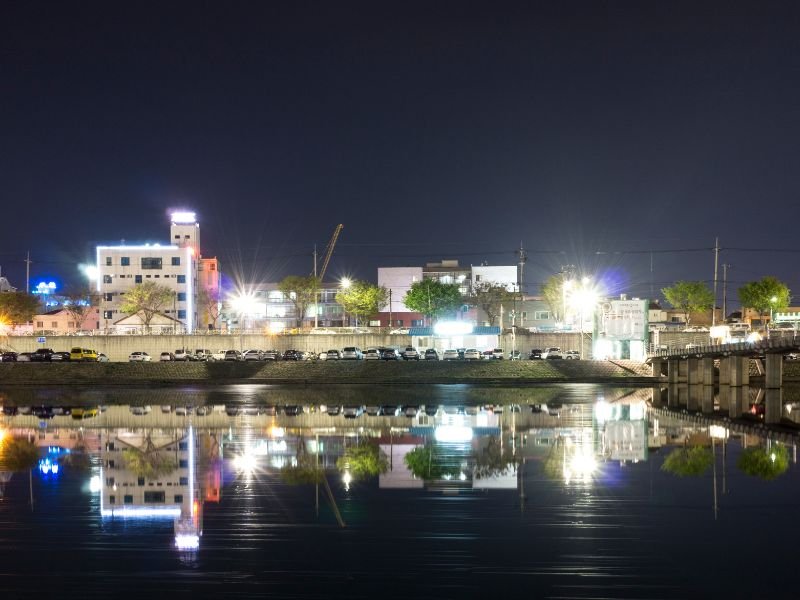
Other Cultural Attractions: Trip to Gangneung, South Korea
Take in some excellent contemporary artworks by dropping by Haslla Art World. It has a commanding presence on the skyline of Gangneung thanks to the grand hotel that sits on its grounds – however, its expansive sculpture gardens are what makes this attraction spectacular – plan on spending at least two hours walking from one installation to the next.
If you have been following this guide up to now, chances are you have worked up quite an appetite. Indulge your hunger and sampling the local cuisine of Gangneung at the Chodang Dubu Village. Dubu stands for tofu in English – at the restaurants here, this Korean staple will prove to be an irresistible treat.
Other Attractions
Learn a bit about the ongoing Cold War between North and South Korea at Tongil Park. Situated on the shores of the East Sea, this park features exhibits that show off Korean War era equipment on both sides. There are also displays which detail the efforts to reunite families and to promote Korean reunification.
Many Koreans and foreign expats visit Gangneung to escape the intense heat of a Korean summer, as there are many attractive beaches in the area. Gyeongpo Beach is the most popular, as it has fine sand and stretches on for about six kilometres.
Jeongdongjin Beach is a much shorter beach at about 250 metres, but it is popular among Korean drama fans and divers/snorkelers. Finally, Anmok Beach, long a favourite of families, is gaining popularity for its proximity to several stylish coffee shops.
source: Next Stop: Korea on YouTube
Top 20 Things To Do in Gangneung, Korea For Visitors
Here are the top 20 things to do in Gangneung:
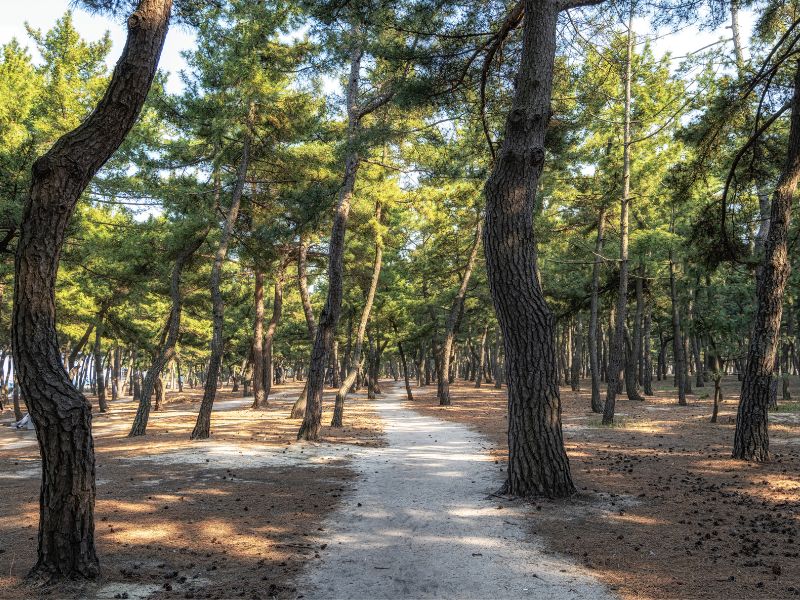
1. Relax at Gyeongpo Beach
Gyeongpo Beach is famous for its golden sands, clear waters, and the scenic Gyeongpo Lake just nearby. It’s a perfect place for swimming, water sports, or just lounging under the pine trees with a view of the East Sea. The beach becomes especially magical at sunrise and sunset, making it a popular spot for photographers. During summer, the beach buzzes with activity, thanks to the annual beach festival.
- Beach festival: A lively event held during the summer months.
- Water activities: Ideal for swimming, surfing, and paddleboarding.
- Beautiful sunsets: Enjoy picturesque views as the sun sets over the water.
2. Explore Gyeongpodae Pavilion
Perched on the shores of Gyeongpo Lake, Gyeongpodae Pavilion is renowned for its panoramic views of the lake and the East Sea. It’s a historic site and one of the best places to view the moon, especially during lunar festivals. The architecture of the pavilion reflects traditional Korean design, offering a peaceful place to unwind. In the spring, the area transforms into a cherry blossom wonderland.
- Cherry blossoms: Visit in spring for stunning floral displays.
- Lunar viewing: Known as one of Korea’s top moon-viewing spots.
- Historic architecture: Traditional pavilion with serene surroundings.
3. Visit Ojukheon House
Ojukheon House is one of the oldest surviving wooden residences in Korea, giving visitors a glimpse into Joseon Dynasty life. It’s also the birthplace of famous scholar Yulgok Yi I and his mother, Shin Saimdang, whose faces grace South Korean currency. Surrounding the house are gardens and a museum dedicated to their contributions to Korean history and philosophy. It’s a must-see for history buffs.
- Historic birthplace: Home of the notable scholar Yulgok Yi I.
- Cultural heritage: One of the oldest wooden structures in Korea.
- Beautiful gardens: Stroll through the lush, well-kept grounds.
4. Enjoy the Anmok Coffee Street
Anmok Coffee Street offers a unique experience where coffee lovers can sip on special blends while enjoying views of the East Sea. Lined with cozy cafes, each offering their own brews and delicious desserts, it’s a perfect place to relax after a day of exploration. The gentle sound of waves crashing against the shore adds to the tranquil vibe. In the evening, the street lights up, making it especially romantic.
- Specialty coffee: Unique blends offered by seaside cafes.
- Ocean views: Relax with a coffee while overlooking the sea.
- Evening ambiance: A romantic spot, especially at sunset.
5. Experience the Charm of Jeongdongjin Beach
Jeongdongjin Beach is famous for being the beach closest to a train station, making it one of the most accessible in the world. It’s also renowned for breathtaking sunrise views, drawing crowds on New Year’s Day to witness the first dawn of the year. The beach’s fine sand and nearby sculptures add to its charm. Not far away, you can explore Hourglass Park and the quirky Sun Cruise Resort, shaped like a cruise ship.
- Sunrise views: A famous spot for catching the first rays of the new year.
- Unique resort: Stay at the Sun Cruise Resort, perched on a cliff.
- Hourglass Park: A fun attraction with a giant hourglass marking time.
6. Visit the Gangneung Seongyojang House
Step into the past at Gangneung Seongyojang House, a well-preserved noble residence from the Joseon Dynasty. With its grand architecture, serene gardens, and traditional buildings, the estate offers a peaceful retreat. Guided tours help visitors understand the life of Korean aristocracy during the time. It’s a beautiful mix of history and nature, perfect for a leisurely afternoon visit.
- Historic residence: See how the aristocracy lived during the Joseon period.
- Beautiful gardens: Peaceful, manicured gardens surrounding the estate.
- Guided tours: Learn about the history and architecture with expert guides.
7. Walk Through Chodang Sundubu Village
Renowned for its soft tofu made with natural sea water, Chodang Sundubu Village is a culinary gem. Visitors can sample the local specialty, sundubu, at various restaurants, each offering their own twist on the dish. The village itself has a charming ambiance, with narrow streets and traditional houses adding to its appeal. It’s a must-visit for food lovers looking to taste authentic local flavors.
- Tofu delicacy: Try the famous soft tofu dishes served here.
- Authentic experience: Traditional Korean village atmosphere.
- Culinary hotspot: Enjoy various tofu dishes at local restaurants.
8. Discover the Gangneung Danoje Festival
The Gangneung Danoje Festival is one of Korea’s oldest cultural events, celebrating the start of summer with colorful rituals, traditional games, and lively performances. Recognized as a UNESCO Intangible Cultural Heritage, the festival brings together music, dance, and crafts, creating a festive atmosphere. Visitors can participate in activities and enjoy the market stalls selling local goods. It’s a vibrant showcase of Korean tradition and community spirit.
- UNESCO festival: One of Korea’s most significant cultural events.
- Lively market: Shop for traditional crafts and local treats.
- Cultural performances: Watch traditional music and dance.
9. Explore Jumunjin Seafood Market
Jumunjin Seafood Market is the largest in the region, offering a vast array of fresh seafood straight from the East Sea. Visitors can pick out their favorite seafood and have it prepared right there at the market’s restaurants. The bustling energy of the market, combined with ocean views, creates a lively and authentic experience. It’s the perfect place to try local specialties like raw fish and grilled seafood.
- Fresh seafood: Buy directly from local fishermen.
- On-site dining: Have your selection cooked on the spot.
- Bustling atmosphere: Experience the lively energy of a traditional market.
10. Stroll Along Gangneung Green City Experience Center (Green Way)
The Gangneung Green City Experience Center, known as the Green Way, is an eco-friendly attraction designed to promote sustainable living. Visitors can explore interactive exhibits that focus on renewable energy, green technologies, and environmental conservation. The center is set in beautifully landscaped grounds, making it an enjoyable place for a relaxing walk. It’s an educational experience that encourages thinking about the planet’s future.
- Sustainability focus: Learn about renewable energy and green living.
- Interactive exhibits: Fun, educational displays for all ages.
- Scenic walking paths: Explore the beautiful outdoor spaces.
11. Attend the Gangneung Coffee Festival
The Gangneung Coffee Festival celebrates the city’s deep-rooted coffee culture with events like barista competitions, coffee tastings, and educational workshops. It’s an ideal event for coffee enthusiasts eager to learn about brewing methods and the history of coffee in Gangneung. The festival also includes live music and art exhibitions, adding a cultural flair. Whether you’re a coffee lover or just curious, this festival offers a rich sensory experience.
- Barista competitions: Watch top baristas show off their skills.
- Coffee tastings: Try various brews and learn about different roasting techniques.
- Live music: Enjoy performances while sipping your favorite cup of joe.
12. Hike to Gyeongpo Provincial Park
Surrounding Gyeongpo Lake, Gyeongpo Provincial Park is a haven for nature lovers. With scenic hiking trails, the park offers stunning views of the lake and the East Sea. The trails are well-maintained and suitable for all skill levels, making it an excellent spot for a peaceful hike. You might also spot various birds, as the area is a favorite for birdwatching.
- Scenic hikes: Trails offering breathtaking lake and sea views.
- Flora and fauna: Explore the diverse wildlife and plant species.
- Perfect for picnics: Enjoy a relaxed day out with friends or family.
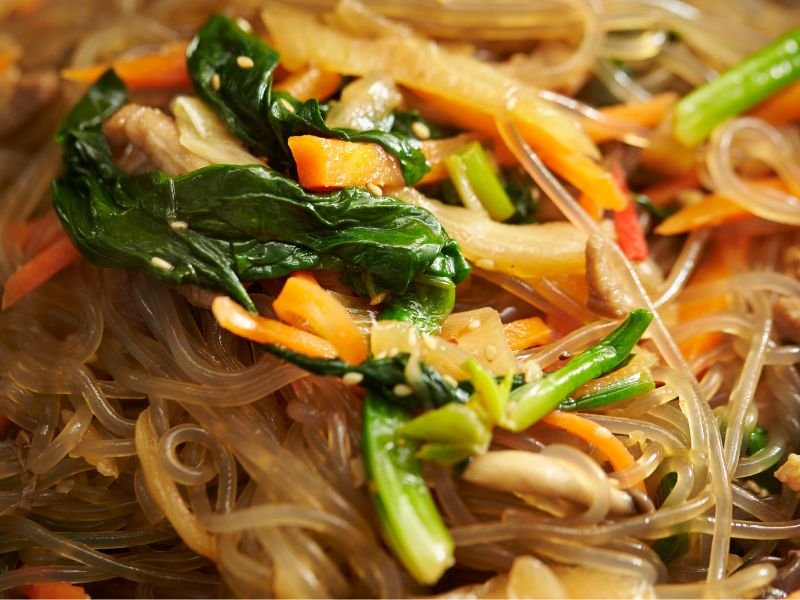
What To Eat and Drink at Restaurants in Gangneung, South Korea
Whether you’re a seafood aficionado, a coffee enthusiast, or someone who enjoys exploring local flavors, Gangneung has something to delight every palate.
Seafood Delights
1. Grilled Squid: Fresh from the East Sea, grilled squid is a local favorite, known for its smoky flavor and tender texture. Often served with a spicy dipping sauce, it’s a simple yet irresistible dish.
2. Hoe (Raw Fish): Experience the Korean version of sashimi with Hoe. Sliced thinly and served with soy sauce, wasabi, and sometimes gochujang (red chili paste), it’s a testament to the freshness of Gangneung’s seafood.
3. Agujjim (Spicy Monkfish Stew): This hearty stew, made with monkfish and an assortment of vegetables in a spicy sauce, is both warming and flavorful, perfect for Gangneung’s chilly evenings by the sea.
Traditional Korean Fare
4. Dakgangjeong (Sweet and Spicy Chicken): A must-try street food, Dakgangjeong is crispy fried chicken coated in a sweet and spicy sauce, often garnished with peanuts for an extra crunch.
5. Japchae (Stir-fried Glass Noodles): A classic Korean dish of stir-fried glass noodles with vegetables and sometimes meat, seasoned with soy sauce and sesame oil. It’s a flavorful and light option that’s popular nationwide.
Gangneung’s Coffee Culture
6. Hand-dripped Coffee: Gangneung is renowned for its vibrant coffee culture, with numerous cafes along Anmok Beach offering hand-dripped coffee. Enjoying a cup while gazing out at the sea is a quintessential Gangneung experience.
7. Coffee Confections: Don’t miss trying various coffee-infused desserts and treats, from coffee bread to coffee-flavored ice cream, showcasing the city’s love affair with the bean.
Korean Comfort Food
8. Kimchi Jjigae (Kimchi Stew): A staple in Korean cuisine, this stew made with kimchi, tofu, pork (or tuna), and onions, offers a tangy and comforting taste that’s both satisfying and deeply flavorful.
9. Bibimbap (Mixed Rice): A bowl of warm rice topped with seasoned vegetables, chili pepper paste, and a fried egg, Bibimbap is both nutritious and delicious. It’s a colorful dish that allows you to taste a bit of everything.
Sweet Treats
10. Hotteok (Sweet Pancakes): These sweet Korean pancakes filled with a mixture of brown sugar, honey, chopped peanuts, and cinnamon are a popular snack, especially during the colder months.
Beverages to Sip
11. Makgeolli: This traditional Korean rice wine, milky and slightly sweet, is a perfect accompaniment to Gangneung’s savory dishes.
12. Bokbunja-ju: A Korean fruit wine made from black raspberries, known for its deep color and sweet, tart flavor, offering a delightful way to end your meal.
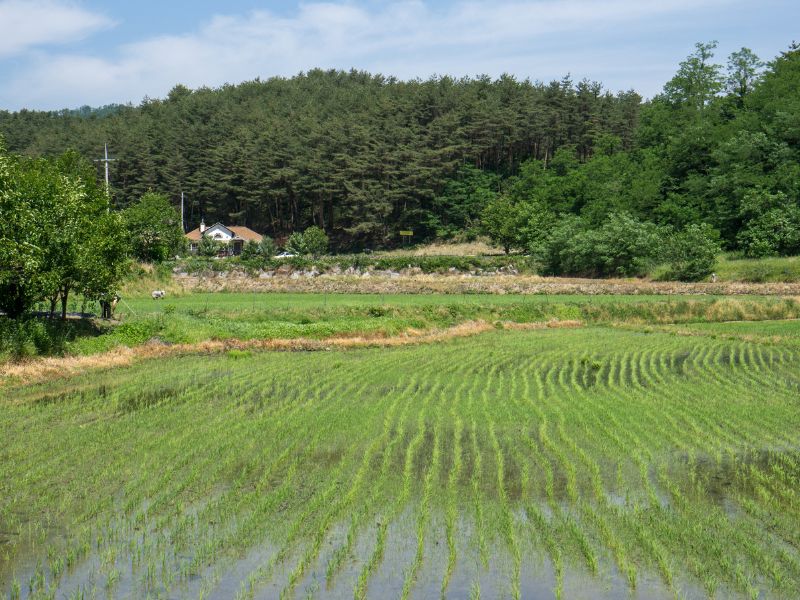
Tours For Visitors To Gangneung, South Korea
Here’s a curated list of tours that promise to enrich your visit to this coastal city:
1. Gyeongpo Lake Bike Tour
Explore the scenic beauty of Gyeongpo Lake on a leisurely bike tour. This tour guides you around the lake’s picturesque pathway, offering views of cherry blossoms in spring or golden leaves in autumn. It’s perfect for those looking to combine light exercise with stunning natural scenery.
2. Anmok Coffee Street Tasting Tour
Dive into Gangneung’s famed coffee culture with a guided tasting tour along Anmok Coffee Street. Sample hand-dripped coffee from various cafes, each with its unique brewing method and beans, and learn about Korea’s burgeoning coffee scene from local baristas.
3. Ojukheon House and Museum Visit
Step back in time with a visit to the Ojukheon House and Museum, one of the oldest wooden residential buildings in Korea. This tour not only explores the historical significance of the site but also delves into the lives of prominent historical figures associated with it, offering a glimpse into Joseon Dynasty lifestyle.
4. Jeongdongjin Sunrise Tour
Catch the first rays of the sun on the Korean peninsula with a trip to Jeongdongjin, a short distance from Gangneung. Renowned for its spectacular sunrise views, this tour is especially popular on New Year’s Day but offers a breathtaking experience year-round.
5. Seafood and Traditional Market Experience
Embark on a culinary journey through Gangneung’s vibrant seafood markets. This guided tour offers insights into local seafood specialties, allows you to interact with local vendors, and even includes a hands-on experience with Korean cooking techniques.
6. Gangneung Danoje Festival Tour
Experience the UNESCO Intangible Cultural Heritage-listed Gangneung Danoje Festival firsthand. This tour, available during the festival period in early summer, immerses visitors in traditional music, dance, rituals, and the colorful atmosphere of one of Korea’s most important cultural celebrations.
7. Gangneung City Highlights Walking Tour
Discover Gangneung’s urban charms with a guided walking tour through its historic streets. Visit key attractions like the Gangneung Art Center, the charming terraced houses of the city’s old districts, and modern installations that reflect the city’s vibrant arts scene.
8. Gangneung Coastal Path Walking Tour
Take a leisurely walk along Gangneung’s coastal path, stretching from Gyeongpo Beach to Anmok Beach. This tour offers not only breathtaking views of the East Sea but also the chance to visit small, hidden cafes and artisan shops along the way.
9. Traditional Korean Tea Ceremony Experience
Immerse yourself in the serene world of Korean tea culture with a traditional tea ceremony experience. Learn about the history and etiquette of Korean tea, taste various local teas, and enjoy the peaceful ambiance of a traditional tea house.
10. Olympic Park and Sports Experience Tour
Relive the excitement of the 2018 Winter Olympics with a tour of the Gangneung Olympic Park. This experience may include visits to the Olympic facilities, opportunities to try out winter sports simulations, and insights into the Games’ legacy in Gangneung.
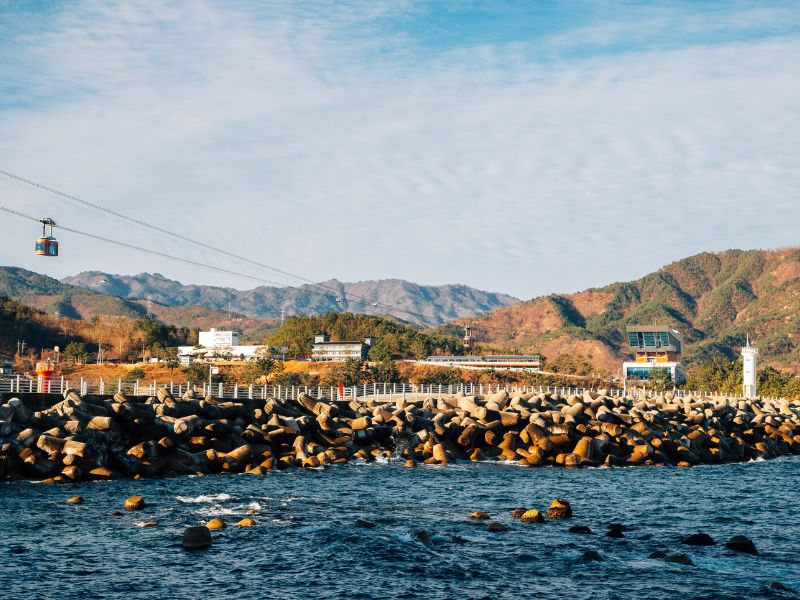
Day Trips From Gangneung, Korea
Here’s a list of day trips from Gangneung that promise to enrich your journey with memories to last a lifetime.
1. Seoraksan National Park
Just a couple of hours’ drive from Gangneung, Seoraksan National Park is a must-visit for nature lovers. Famous for its breathtaking mountain scenery, hiking trails, and the iconic Ulsanbawi Rock, it offers a perfect escape into nature. Each season brings a new palette of colors, making it a year-round destination. Don’t miss the cable car ride for a panoramic view of the park’s stunning landscapes.
2. Sokcho
Located about an hour’s drive from Gangneung, Sokcho is a coastal city known for its delicious seafood, beautiful beaches, and the gateway to Seoraksan National Park. Explore the vibrant Sokcho Market, where you can sample local specialties like dakgangjeong (sweet and spicy chicken) and fresh sashimi. Relax at Sokcho Beach or take a stroll along the scenic Cheongchoho Lake. For a bit of history and culture, visit the Sokcho Expo Tower for its views and the nearby Abai Village, famous for its North Korean heritage.
3. Samcheok
Drive down the coast to Samcheok, where you can explore the fascinating Hwanseongul and Daegeumgul caves, part of the Samcheok Ocean Railbike route. The city also boasts beautiful beaches like Yonghwa Beach, perfect for a leisurely day by the sea. Don’t miss the Samcheok Marine Cable Car, offering spectacular views of the coastline. For a unique experience, visit the Haesindang Park, also known as the Penis Park, for its interesting sculptures and ocean views.
4. Odaesan National Park
An hour’s journey inland from Gangneung brings you to Odaesan National Park, renowned for its ancient forests, serene temples, and scenic hiking trails. The park is home to Woljeongsa Temple, where you can experience a temple stay or simply enjoy the peaceful surroundings. Hiking to Birobong Peak offers rewarding views of the national park’s vast beauty. Odaesan’s vibrant fall foliage is a sight to behold, drawing visitors from across the country.
5. Pyongyang (via DMZ tour)
While technically challenging and not a typical day trip, tours to the DMZ (Demilitarized Zone) from areas closer to Seoul offer a poignant look at the divide between North and South Korea. Some tours may include views across the border into North Korea, offering a rare glimpse of the secretive state. These tours often feature historical briefings, visits to tunnels under the DMZ, and a chance to see the Joint Security Area. It’s a powerful reminder of Korea’s divided history and ongoing hopes for peace.
6. Donghae
A short drive south of Gangneung, Donghae is a city with charming beaches, such as Mangsang Beach, and the mysterious Mureung Valley. Explore the beautiful Chuam Beach and the iconic Chotdaebawi Rock for some spectacular photo opportunities. The city’s Mureung Valley offers serene walks alongside clear streams and lush forests. Don’t miss visiting the Mukho Lighthouse for panoramic views of the East Sea.
7. Yongpyong Resort
In the winter months, a trip to Yongpyong Resort offers a snowy paradise for skiers and snowboarders alike. Located about an hour and a half from Gangneung, it’s one of South Korea’s premier ski resorts, with slopes for all skill levels. The resort also features year-round attractions like a golf course, gondola rides, and hiking trails. Yongpyong’s scenic beauty and recreational facilities make it a perfect family getaway.
8. Jeongdongjin
Known for having the closest train station to the sea, Jeongdongjin is a popular spot for watching sunrise over the ocean. It’s just a short drive or train ride from Gangneung. The area features interesting attractions like the Hourglass Park, marking the millennium, and the Jeongdongjin Sandglass Park. The Sun Cruise Resort, a hotel built to look like a cruise ship perched on a cliff, offers unique accommodation and stunning sea views.
9. Jumunjin
Head north from Gangneung to visit Jumunjin, famous for its seafood market and beautiful beaches. It’s a great spot to enjoy fresh seafood right by the ocean. The Jumunjin Breakwater became famous as a filming location for the K-drama “Goblin,” attracting fans to recreate the iconic scene. The area’s relaxed atmosphere and beautiful coastal views make it an ideal spot for a leisurely day trip.
10. Taebaek
Venture into the mountains to Taebaek, known for its scenic beauty and cultural significance. In winter, Taebaek hosts a snow festival featuring impressive ice sculptures and snow activities. The Hwangji Pond and Taebaeksan Mountain offer beautiful hiking opportunities, with trails leading through dense forests to ancient shrines and stunning vistas. Taebaek’s highland agriculture, including medicinal herbs, offers a unique insight into local farming practices.
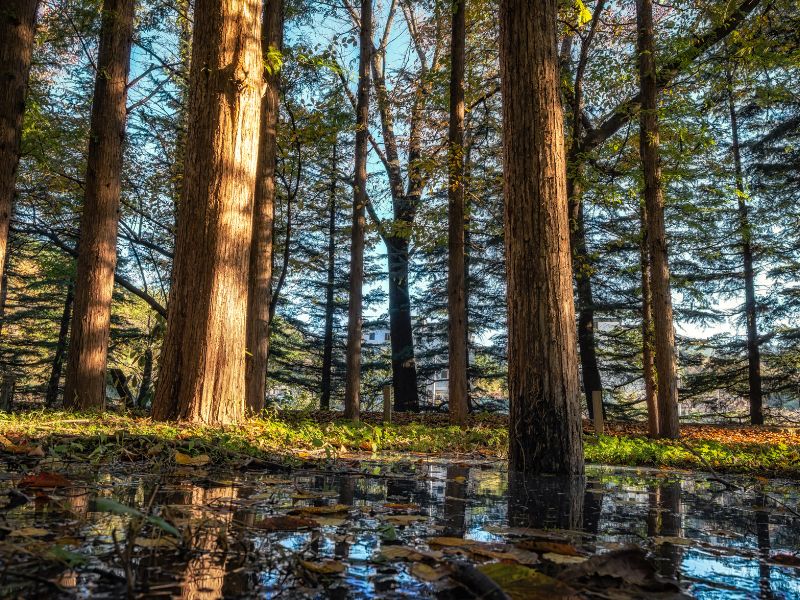
Gangneung Transportation Guide
Whether you’re exploring the city’s beautiful beaches, diving into the coffee culture, or venturing out for day trips, here’s how you can get around Gangneung and beyond:
By Train
- KTX (Korea Train eXpress): Gangneung is well-connected to Seoul and other major cities via the KTX, South Korea’s high-speed train service. The Gangneung Station is the terminal station for the Gyeonggang Line, making trips to and from Seoul fast and convenient.
- Local Trains: For travels to nearby areas or for a more scenic route, local trains offer a slower, but often more picturesque, alternative to the KTX.
Bus Trips
- Intercity Buses: The Gangneung Intercity Bus Terminal serves as a hub for buses to and from Seoul, Incheon, Daejeon, and other cities across South Korea. It’s an economical and reliable way to travel longer distances.
- City Buses: Gangneung’s city buses cover extensive routes within the city and to neighboring areas, including popular tourist destinations like the beaches and the Olympic Park. They’re an affordable way to explore the region.
- Express Buses: For a faster, more direct service to major cities, express buses are available. They offer a comfortable ride, ideal for longer journeys.
By Car
- Car Rentals: Renting a car can offer the flexibility to explore Gangneung and the surrounding region at your own pace. Several rental agencies operate in Gangneung, including at the train station, making it easy to pick up and drop off your vehicle.
- Taxis: Taxis are a convenient, though more costly, way to get around, especially for shorter distances or when public transportation is not available. They can be hailed on the street, found at taxi stands, or booked via phone or app.
By Bicycle
- Bike Rentals: Gangneung’s flat terrain and scenic coastal paths make it ideal for exploring by bicycle. Rental bikes are available, including electric bikes, offering a fun and eco-friendly way to see the city.
On Foot
- Walking: Many of Gangneung’s attractions, particularly along the coast and in the city center, are easily accessible on foot. Walking can be a pleasant way to explore the area, especially the beaches and Coffee Street in Anmok.
Special Tips for Travelers:
- Transportation Apps: Utilizing South Korean transportation apps can greatly ease your travel planning. They offer real-time schedules, route options, and can even handle ticket bookings for trains and buses.
- T-Money Card: For convenience and savings on city buses, consider purchasing a T-Money card, a rechargeable smart card used for public transit across South Korea, including Gangneung.
- Tourist Information Centers: Gangneung has several tourist information centers, including at the train station and major tourist sites. They can provide maps, bus schedules, and helpful advice for getting around.
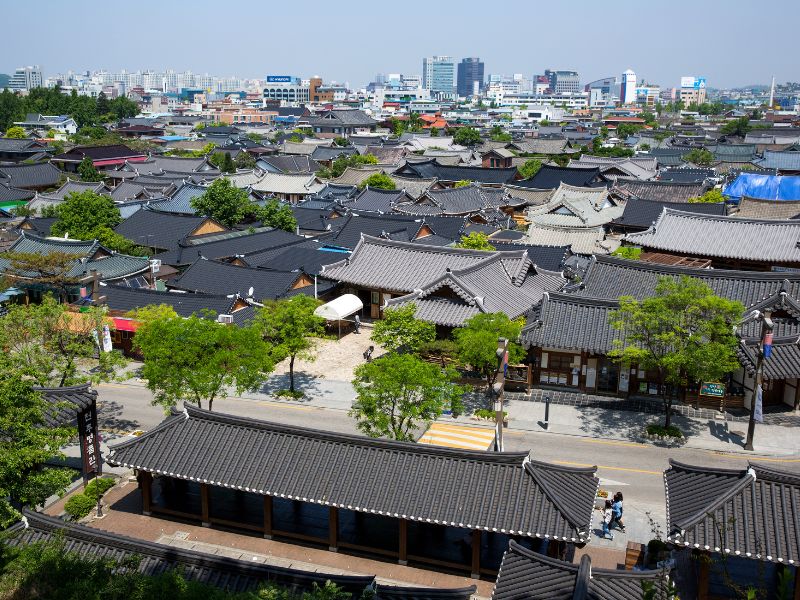
Where To Visit After Your Trip To Gangneung?
Here’s a travel guide to diverse destinations you might consider exploring after your visit to Gangneung.
1. Seoul
Just a couple of hours from Gangneung via KTX, Seoul, the dynamic capital of South Korea, beckons with its vibrant blend of history, culture, and modernity. From the majestic Gyeongbokgung Palace to the bustling streets of Myeongdong and the serene beauty of Bukchon Hanok Village, Seoul offers endless exploration opportunities. The city’s nightlife, centered around Hongdae and Itaewon, provides a glimpse into Korea’s contemporary urban culture. Don’t miss the panoramic city views from Namsan Tower, especially beautiful at sunset.
2. Jeonju
Renowned for its well-preserved Hanok Village, Jeonju is a city that lets you step back in time to experience Korea’s rich cultural heritage. It’s also the birthplace of bibimbap, offering foodies a chance to indulge in this iconic dish at its source. The city’s traditional tea houses and artisan workshops add to its charm, making it a perfect next stop for culture enthusiasts. Jeonju’s vibrant atmosphere during cultural festivals is something not to be missed.
3. Busan
South Korea’s second-largest city, located on the southeastern coast, is famous for its beaches, mountains, and temples. Haeundae Beach draws visitors for its lively vibe and scenic beauty, while the Haedong Yonggungsa Temple offers serene ocean views. The bustling Jagalchi Fish Market and the colorful Gamcheon Culture Village are must-visits for a taste of Busan’s diverse urban life. Busan’s dynamic blend of natural beauty and urban energy makes it an exciting next destination.
4. Gyeongju
Often referred to as a “museum without walls,” Gyeongju is steeped in Silla Dynasty history, showcasing ancient tombs, temples, and artifacts throughout the city. The Bulguksa Temple and Seokguram Grotto, both UNESCO World Heritage Sites, provide insight into Korea’s Buddhist heritage. The tranquil Anapji Pond, especially beautiful at night, is a testament to the city’s ancient architectural prowess. Gyeongju’s historical significance and peaceful ambiance offer a reflective journey into Korea’s past.
5. Incheon
Just west of Seoul, Incheon is known for its modernity, exemplified by the futuristic Songdo International Business District. The city’s Chinatown offers a colorful array of restaurants and shops, providing a taste of multicultural Korea. Wolmido Island, with its amusement park and seaside cafes, is a popular getaway. Incheon’s blend of cultural diversity, modern architecture, and recreational spaces makes it a fascinating stop.
6. Jeju Island
A short flight from the mainland, Jeju Island is a volcanic paradise known for its stunning natural landscapes, including the iconic Jeju Volcanic Island and Lava Tubes. Hike up Hallasan, South Korea’s highest mountain, or explore the dramatic coastlines shaped by volcanic activity. The island is also famous for its unique Haenyeo (female divers) culture and delicious seafood. Jeju’s natural wonders and laid-back island lifestyle provide a perfect retreat.
7. Suwon
Just an hour from Seoul, Suwon is famed for its well-preserved Hwaseong Fortress, a UNESCO World Heritage Site offering insights into late 18th-century military architecture. The fortress walls provide a scenic walk, offering views of both the historical and modern sides of the city. Suwon is also known for its vibrant food scene, particularly its Korean fried chicken. The city’s mix of history, culture, and cuisine makes it an appealing next stop.
8. Andong
Andong is considered the spiritual heartland of traditional Korea, home to the Hahoe Folk Village, where visitors can experience authentic Korean culture and traditions. The city is also known for its annual mask dance festival and its traditional soju. Andong’s serene landscapes and historical sites, such as the Confucian academies, offer a peaceful retreat. It’s a destination where the pace of life slows, allowing for cultural immersion.
9. Chuncheon
Famous for dakgalbi (spicy stir-fried chicken), Chuncheon offers a culinary adventure alongside beautiful natural scenery, such as the serene Soyang River and Nami Island. The city’s artistic vibe, with mural villages and cultural festivals, adds to its charm. Chuncheon serves as a gateway to many outdoor activities, including cycling and boat trips. It’s an ideal destination for those seeking a blend of nature, food, and art.
10. Daegu
As a city known for its medicinal herb market and modern fashion industry, Daegu offers an intriguing mix of traditional and contemporary Korean life. The city’s vibrant downtown areas, such as Dongseongno, are great for shopping and dining. Visit the Seomun Market for a taste of local flavors, or relax in one of Daegu’s many urban parks. Daegu’s warm climate and welcoming atmosphere make it a cozy next stop on your Korean journey.

Gangneung Travel Guide: Final Thoughts
Now we wrap up our deep dive into Gangneung. This coastal city, with its harmonious blend of sea, culture, and coffee, has shown us that true beauty lies in the details. From the serene early morning walks along Gyeongpo Beach to the vibrant buzz of Anmok Coffee Street, Gangneung has unfolded itself as a destination rich with experiences. Let’s take a moment to savor the essence of this South Korean gem and the unforgettable memories it offers.
Sea Breezes and Sunrise Wonders
Gangneung’s beaches have whispered tales of the sea, with each wave painting pictures of the city’s maritime heart. Whether it was basking in the golden glow of sunrise at Jeongdongjin or feeling the soft sand beneath your feet at Anmok Beach, the coastal allure of Gangneung is undeniable. These moments by the sea are not just fleeting; they’re imprints on the soul.
A Cultural Tapestry
Delving into Gangneung’s rich cultural heritage has been like walking through a living museum. The Ojukheon House, with its storied past, and the tranquil Gyeongpodae Pavilion have connected us to centuries of Korean history and tradition. The city’s festivals, markets, and temples have offered a vibrant glimpse into the enduring spirit and artistic legacy of Gangneung.
The Flavor of Gangneung
Gangneung’s culinary journey has been nothing short of a feast for the senses. From the fresh catch of the day served at local markets to the unique taste of Korean dishes and the world-class coffee that has become the city’s signature, each meal has been an exploration of flavor and tradition. These tastes will linger long after the journey ends, a delicious reminder of time spent in Gangneung.
The Olympic Spirit
The echoes of the 2018 Winter Olympics still resonate in Gangneung, reminding us of the city’s moment in the global spotlight. The Olympic Park stands as a testament to sportsmanship, dreams, and the uniting power of sport. This legacy of excellence and international camaraderie adds a layer of inspiration to the Gangneung story.
So, here’s to the next adventure, with Gangneung forever etched in our wanderlust hearts.
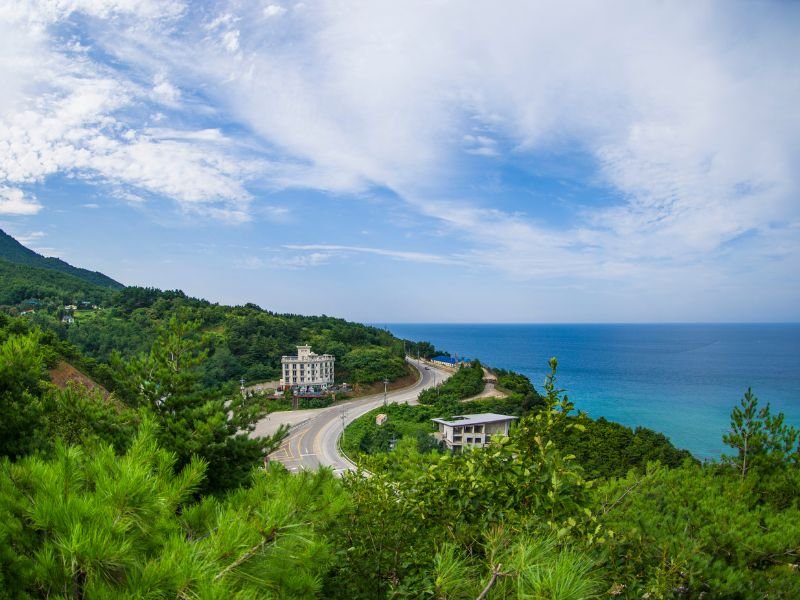
Ode To Gangneung
Gangneung, where the waves crash loud, Golden beaches, a serene crowd. Nature’s beauty, lush and green, A feast for the eyes, like never seen.
Explore the streets, taste the treats, From fresh seafood to sweet Korean sweets. History rich, culture bold, A story to tell, a tale to be told.
From mountains high to temples old, A city with secrets, waiting to unfold. Experience life, soak in the vibe, In Gangneung, a journey, you won’t survive.
